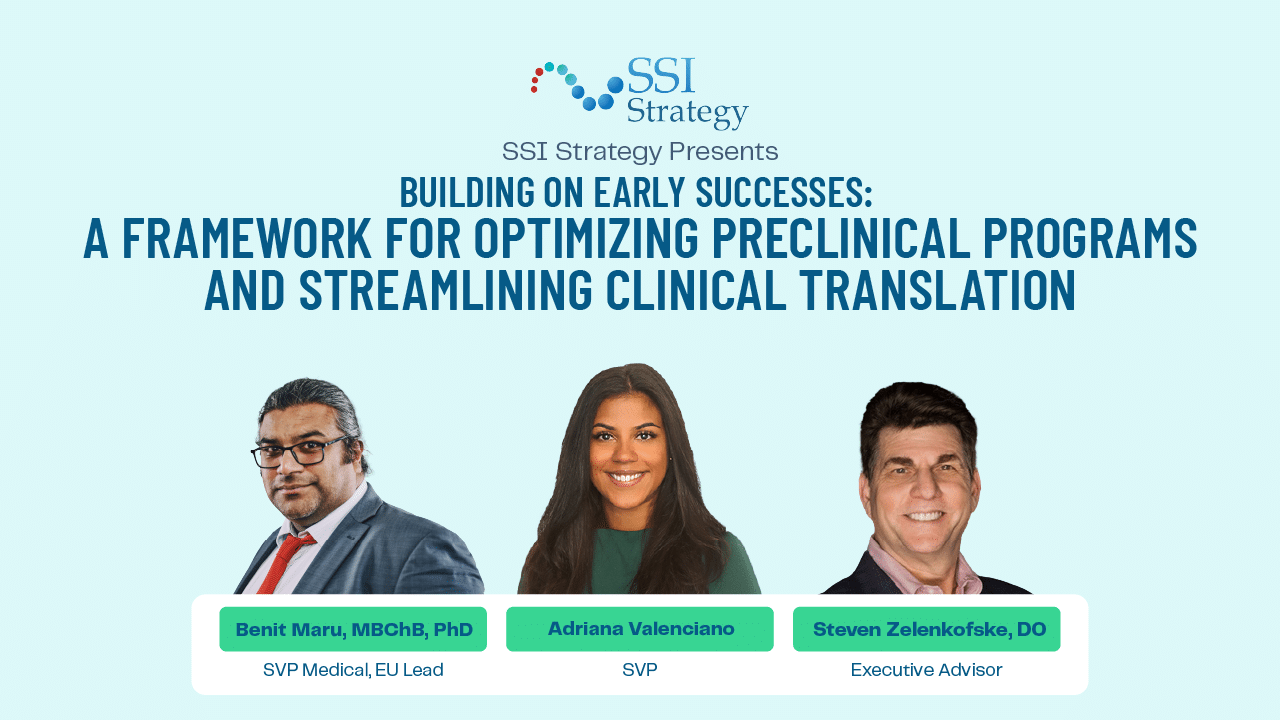If we had to summarize this next Episode of the Emerging Biotech Leader in one sentence, it would be “a deeper dive on both the impact and importance of Medical Affairs,” inspired by our interview with Rachel Couchenour in Episode 13. But that single sentence alone wouldn’t convey the robust takeaways and mindset shift that this episode provides.
Max Craig, Vice President at SSI Strategy, joins hosts Ramin and Kim for a detailed discussion, one where all 3 strategically remind biotech leaders of pitfalls to avoid and how to think and plan for Medical Affairs appropriately.
One specific example that you will hear from Max: think about Medical Affairs metrics before it’s too late.
As a preview of what’s to come in Episode 14, here’s more on what Max, Kim, and Ramin explored:
● Telling the story of Medical Affairs in ways that are quantifiable. Instead of connecting Medical Affairs to ROI and dollars and cents, evaluating their impact based on opportunity cost
● Patience plays a role in understanding Medical Affairs’ impact on patients, KOLs, and HCPs
● Value is defined differently from biotech to biotech, depending upon the size and number of treatments in the market. That said, in Medical Affairs, it’s wise not to get prescriptive; avoid approaching value as a “one size fits all” model
● While execution in Medical Affairs is important, strategy takes precedence, especially as Medical Affairs meet with the board
● The bare minimum for a Medical Affairs organization to succeed is two years. Ramin does share that if the need arises, Medical Affairs can be accelerated, but that’s not the status quo
We could keep going, but we don’t want to give this entire episode away in a recap.
On that note, we’ll let you read it and then hit that play button!
Expanding on Episode 13: The 4 Levels of Leadership
One of the key themes of Episode 13 was working cross-functionally, specifically across all stakeholders. As a follow-up in Episode 14, this topic was broached once more. For Ramin, who has previously held roles in Medical Affairs, the best way to work across the entire enterprise is to first level-set, then expand your focus, and lastly, stay focused on the long-term vision: the patients and HCPs.
First, Max observes that some of the best Medical Affairs talent understand working cross-functionally is an art of give-get. “Show up to your meetings with a purpose and be prepared to listen.”
Max also says it helps to think of your career and skills in Medical Affairs through a leadership lens, the 4 levels of leadership. There’s individual contribution. Then there’s being a “leader of leaders,” then an enterprise leader, and finally, an external leader.
With these in mind, you can circle back to Ramin’s advice and stretch your thinking beyond your silo.
Taking Time: Behavior Change Doesn’t Happen Overnight
What does patience have to do with patients? Besides our play on words, a primary role in Medical Affairs, especially in rare disease, is involvement with patient groups, communities, and parents or caregivers.
Yet the value from those efforts isn’t available on day one of forming the team. Results are a long-term game, and the specific results Medical Affairs drives occur from a sequence of events versus one stand-alone initiative or action.
Kim shares this POV: “One of the biggest challenges with the value of Medical Affairs is that medical efforts take time. You can’t move behavior change in the medical community overnight. It doesn’t take one interaction to completely change sentiments. We’re talking about deeply ingrained understandings and behaviors that we have to shift mindsets and industries and behaviors related to. And that takes time. And most organizations are impatient, especially in biotech, where we don’t have the time and money to do it.”
This is where the idea of looking at Medical Affairs by way of opportunity cost becomes important.
How do you measure opportunity cost? Kim shared a few examples.
● You can look at your sales team and imagine, without Medical Affairs, how they might take double the amount of time in the field?
● Another scenario is that without Medical Affairs, it could take longer for people to see the potential of your therapeutic.
● Lastly, you can measure based on the true clinical pull-through compared to what you forecasted. With a Medical Affairs team in place early on, your results could vary from having a waitlist to having 40 patients on day 1.
Again, these results become tangible in hindsight. And the data backing them up doesn’t lie. Max shares, “A lot of work has been done, and we have case studies saying the difference in uptake with different levels of market preparation by global
medical affairs. Those uptake curves are so much longer when you haven’t had medical affairs out there beating the drum.”


